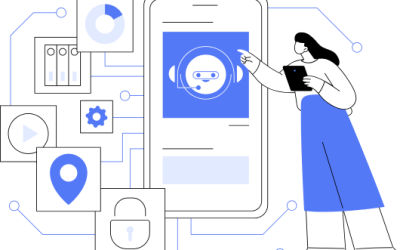There are several factors in marketing and sales that can cause Follow Up Fatigue such as following up with the wrong people and not having a central location for prospect and client data like a CRM. and following up with the wrong people. Another factor that can cause Follow Up Fatigue is taking too long to close a sale. Not only does the length of a sale cause Follow Up Fatigue, but it also eats into profits and revenue.
In this article, we explore why it takes so long to convert a prospect to a customer and what we can do to sell more with less effort. In other words, how can we move the prospect through our sales funnel faster and minimize obstacles?
To create a smooth journey from prospect to customer, a business needs:
- A definable sales funnel with stages that can guide a person from awareness to a paying customer.
- A CRM to help nurture the prospect/customer relationship with tools such as segmentation and automation to deliver the right content at the right time.
As a business owner, you may have a sales funnel and a CRM, but it is still taking too long to close the sale. There are several reasons this could be happening and asking the right questions can help you find and overcome the obstacles. To help us understand, let’s take a look at Cathy’s pest control company.
Cathy owns a pest control business. She employs 10 technicians who are in the field and 5 salespeople along with several administrative staff. Cathy has a sales funnel with the following stages:
- Awareness
- Exploratory call
- Proposal for treatment
- Sign contract
- Schedule treatment
She has implemented a CRM so her sales team can track each lead and move them through each stage. This has been helpful to see where each lead is in the sales funnel. However, she notices it is taking too long to convert the leads to customers and she is actually losing more leads than converting leads. Cathy reached out to a CRM consultant who took a look at each stage of her funnel. The consultant asked a series of questions and provided recommendations:
Is she attracting the right audience?
If Cathy is attracting unqualified buyers for her services, her sales team will be spending too much time trying to convince them to buy. Unqualified leads need to be pushed and pulled through the sales funnel, and we know in a literal sense that pushing and pulling requires more energy than guiding.
The consultant recommended that she look at her CRM data. What do the most qualified customers with the quickest sale have in common? What do the unqualified customers who reluctantly bought a service have in common? Immediately, she saw two characteristics:
- The best customers are homeowners and unqualified customers are not
- The best customers are usually interested in a long-term treatment plan and unqualified customers usually try to talk down the price of a single treatment
Based on this information, Cathy reevaluated two areas for awareness. She looked at her advertising and where homeowners tend to go online such as social media, streaming services, and publications. She also looked at the demographic of networking groups that her sales team attended. After she adjusted advertising and networking, she noticed that she and her team were starting to attract better-quality leads.
Is she automating tasks that are repetitive manual tasks?
As a part of guiding leads through each stage of her sales funnel, her team must collect information, answer questions, get signatures, set up appointments, and so on. These tasks, although necessary, were taking way too long to the point of causing frustration on the prospect’s behalf.
The CRM consultant recommended that Cathy evaluate the tasks and determine which ones can be automated. For example, her sales team will send a list of questions to a homeowner to gather information like the square footage of the home, size of the yard, number of pets in the home, and so on. Once they received the information, they had to enter it into the CRM. By the time they got it back from the prospect, it could be days or a week.
Cathy created a workflow to send an email with a link to her online form to gather the needed information from the homeowner. As soon as the homeowner submitted the answers, the data was transferred to the CRM and the assigned salesperson was notified. Cathy also automated a series of emails that shared detailed information about the service’s terms of the agreement, and her contract once the property information was submitted.
By automating tasks in each stage of her sales funnel, she saw that the time to close sales was cut in half over two months.
Which stage has the biggest drop-off or abandonment?
When the CRM consultant looked at Cathy’s customer data, she noticed that leads were abandoning the sales funnel at the proposal stage at a higher than normal rate. This was discouraging to her team because they brought leads this far and took time to tailor proposals only for them to say no.
The consultant recommended that she evaluate the proposal process specifically in two areas:
- Does the prospect understand the proposal?
- Is the signing process an easy experience?
Cathy looked at the process and decided she need to make two changes:
- The process was full of technical language and the prospect could not understand what it was signing. More often than not, the sales team had to explain terminology that was not necessary for the proposal. Cathy re-wrote the proposal template so prospects could understand what they were reading.
- The signing process for the proposal involved the prospect downloading and printing the proposal, signing it, and getting it back to them. It was the latter that caused a big part of the abandonment. To remedy this, she used her CRM’s electronic signature feature, so prospects could sign online and send it back at the click of a button.
As a result, Cathy saw abandonment decrease because the proposal experience was easy for the prospect. They understand what they were getting when they signed the contract, and the signature process did not involve the effort of downloading, printing, and returning. As a result, the sales team experienced less Follow Up Fatigue as it no longer had to hound its prospects to finalize each contract
Conclusion
How long should it take for a customer to go through your sales funnel? A day? A week? A month? Take a minute and evaluate the time it takes to close a sale for your business. You can ask the same questions that the CRM consultant asked Cathy and use your CRM to evaluate your obstacles. If you are not using a CRM and would like to learn more about it, contact us and schedule a demo of X2CRM. We will show you how X2CRM can help you sell more with less effort.





